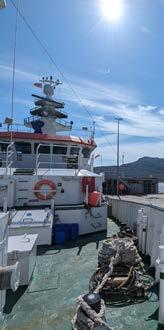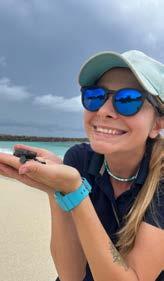THE BRIDGE

News from the School of Ocean Sciences and the School of Ocean Sciences Alumni Association



News from the School of Ocean Sciences and the School of Ocean Sciences Alumni Association

The newsletter of the School of Ocean Sciences and our alumni.
Aiming to keep all those interested informed of developments both in the School in Menai Bridge and globally through our vast network of alumni. By linking past, present and future potential students we hope to facilitate a network of marine scientists in support of pushing back the frontiers of our science and in providing a bridge between academic research and the offshore industry.
Edited by Tom Rippeth


Don’t forget that you can catch up on previous editions of “The Bridge” online by visiting: https://www.bangor.ac.uk/ oceansciences/newsletter.php.en

Welcome to the Summer 2024 edition of the Bridge newsletter. As you will see it has been a busy 6 months here in Menai Bridge with the School of Ocean Sciences continuing to grow and spread our influence.
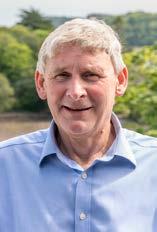
Kind Regards
In May we were delighted to welcome back many of our former students, from all corners of the world, to our Alumni 30th Anniversary weekend. We are also very grateful to the alumni who returned to Menai Bridge in February to support the annual Ocean Sciences Careers Fair and to those who sit on our alumni board and guide our curriculum to ensure it stays relevant and meets modern skills needs.
We are also delighted to welcome 6 new academic staff to the School to actively contribute to our teaching (some to an exciting new MSc in Marine top Predator Ecology) and to develop new directions in research in SOS and across College. We also mark the retirement of one of our longest serving staff members, Dr David Assinder, who first joined the school as a lecturer in Marine Chemistry in 1985.
We have much to celebrate! We were successful in our bid for the Athena Swan Bronze award in recognition of the work within the school to support and transform gender equality and thanks to Dr Margot Saher for leading the submission. Our staff also continue to receive international recognition with Dr Iestyn Woolway receiving Early Career awards from the European Space Agency and Royal Geographic Society, and Professor Yueng-Djern Lenn being elected a Fellow of the Learned Society of Wales.
And finally, we look forward to seeing another cohort of our students graduate on the 9th July and wish them every success in their careers and welcome them to the SOS Alumni Association.


Dr Iestyn Woolway, NERC Independent Research Fellow at the School of Ocean Sciences has won the Prestigious European Space Agency’s Earth Observation Excellence Award 2024.
The award celebrates the outstanding efforts of scientists and researchers who have advanced the innovative application of Earth observation data.
Iestyn’s work focuses on the physics and hydrology of lakes worldwide and their links to climate using space-based observations combined with in situ data and modelling to measure water temperature, evaporation, and ice cover.
We are also delighted to report that Iestyn has also been awarded the 2024 Royal Geographical Society Gill Award.
The award was first made in the early 1880s and was originally awarded to deserving scientific travellers. Now, the award is given for the “encouragement of geographical research in early career researchers who have shown great potential”.
It is awarded in honour of Captain William J. Gill RE (1843–1882) who travelled and surveyed in Asia, including expeditions in Central Asia and Persia, and through China and eastern Tibet to Myanmar, areas where Iestyn’s research has highlighted the impact of climate change on lakes
Iestyn has also been awarded a Distinguished Scientist fellowship from the Chinese Academy of Sciences via the President’s International Fellowship Initiative. You can read more about Iestyn’s climate change research in recent editions of the Bridge.

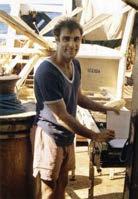
Professor Yueng-Djern Lenn has been elected a Fellow of the Learned Society of Wales.
The Learned Society of Wales is the national academy for arts and sciences. The Fellowship brings together experts from across all academic fields and beyond. They use this collective knowledge to promote research, inspire learning, and provide independent policy advice. The society currently has over 700 Fellows, representing excellence in all branches of learning.
Alumni Dr John Siddorn (MSc and PhD Physical Oceanography) has been appointed as the new Chief Executive Officer of the UK National Oceanography Centre.
John takes over from fellow SOS alumni Professor Ed Hill CBE who has led NOC over the past 20 years. You can read more about John’s journey in the Winter 2021/22 edition of the Bridge.
Alumni Professor Stefan Rahmstorf has won the 2024 Alfred Wegener Medal of

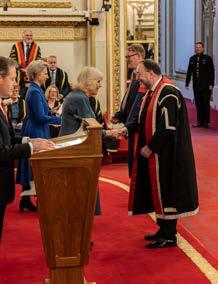
The medal is one of the most prestigious awards made by the Union and is bestowed to scientists who have achieved exceptional international standing. Stefan received the award in recognition of his exceptional and groundbreaking research in climate science and oceanography. Stefan originally came to Bangor as a physics student to take the MSc course in Physical Oceanography. It was this move which first inspired his interest in the ocean and its role in global climate.
Stefan has gained worldwide recognition for his groundbreaking work on several research topics, including the stability of ocean circulation, the modelling of climate change in Earth’s history, the analysis of sealevel rise, and the mechanisms of extreme weather events. Through his research on the thermohaline ocean circulation, he played a key role in establishing the concept of ‘tipping points’ in the climate system.
Stefan was awarded an honorary fellowship by Bangor University in 2007.
The Vice-Chancellor Professor Edmund Burke recently attended Buckingham Palace to receive the Queen’s Anniversary Prize medal and certificate award which recognised Bangor University’s work for the benefit of public health.
The award was for the novel system for public health surveillance through the analysis of harmful pathogens in wastewater, deployed nationally during the pandemic and now adapted to measure a wide range of public health indicators. This work heavily involved Professor Shelagh Malham and her team.


The end of this semester saw the retirement of one our
longest serving academic staff members, Dr David Assinder.
David first took a lecturing role in Marine Chemistry here in the School of Ocean Sciences in 1987. David is well known for inspiring even those students who came to university hating chemistry, and graduated wondering at the marvels of biogeochemical cycling.
Ray Delahuntly Prize – Best 1st year student in Marine Biology and Oceanography
Avery Forney, BSc Marine Biology and Oceanography
Gavin Borthwick Prize – Best 1st year student on a Marine Biological Degree
Judy-Ann Stevenson, BSc Marine Biology
Sinclair Buchan – Best 1st year on a Geosciences Degree
James Roberts, BSc Geological Oceanography
Darbyshire Prize – Best final-year student (Physical)
Weronika Kaznowska, MSci Marine Biology and Oceanography
Darbyshire Prize – Best final-year student (Biological)
Malaak Al Lawati, BSc Marine Vertebrate Zoology
Nomination for the Bangor University John Robert Jones Prize – Most meritorious student
Weronika Kaznowska, MSci Marine Biology and Oceanography
BSRG Award Nomination for undergraduate sedimentology dissertation
Michael Jolley, MSci Marine Biology and Oceanography
UK Challenger Society Award nomination for best final year project in oceanic research
Sophie Wilday, MSci Marine Biology and Oceanography
A new Bangor student-led publication that highlights the project work undertaken by Hannah Mance (2022, MSc Marine Biology).
In addition, two SOS undergraduates added to the data generated by Hannah by voluntarily undertaking invertebrate collections and a long-term experiment with Dr Laura Grange over the summer of 2022. These undergraduates are Miles Ellis (2022; BSc Marine Biology and Zoology) and is currently undertaking his MRes studies with Dr Laura Grange, and Daniel Matok (BSc Ocean and Geophysics). The research was carried out in collaboration with British Antarctic Survey.
Paper: Peck, L. S., Mance, H., Ellis, M., Matok, D. & Grange, L. (2024). Population characteristics and predation rates of the dominant soft bodied and durophagous predators on temperate intertidal shores. Royal Society Open Science.

Project restoring oyster habitats around the UK coast wins The Great British Wildlife Restoration award. The Wild Oysters Project, which is restoring Conwy Bay’s oyster beds, has scooped a top prize for their incredible work.


Bangor University along with international conservation charity ZSL (Zoological Society of London), the Blue Marine Foundation (Blue Marine) and British Marine have won the inaugural Great British Wildlife Restoration award. They were selected from a shortlist of 21 other native species projects in the competition organised by BIAZA (the British and Irish Association of Zoos and Aquariums).
Members of Parliament and the House of Lords voted for The Wild Oysters Project
The competition highlighted the role of good zoos, aquariums and others in protecting and restoring UK wildlife through field conservation work, habitat restoration and education.
The Wild Oysters Project leaders were presented the award by Speaker of the House of Commons, Sir Lindsay Hoyle MP, at a special reception held at Speaker’s House.
The Wild Oysters Project, supported locally by partners Groundwork Northeast and Cumbria and Bangor University, aims to restore Britain’s seas to health through the restoration of the native oyster after the species declined by 95%, with the dramatic decrease due to a combination of habitat loss, pollution, disease and over-harvesting.
Just last year (2 October 2023) the project’s marine conservationists successfully released 10,000 European flat oysters onto a 7,500sqm newly created underwater living reef - marking a landmark moment in the restoration of the native species to UK shores - with similar plans for native oyster reef in North Wales this summer.
The ambitious project set up 141 oyster nurseries underneath marina pontoons across three restoration hubs - which acted as maternity wards for young oysters and continued to monitor these mature oysters with the support of 428 citizen scientist volunteers. More than 30,535 students and 82,127 members of general public engaged with the project, understanding how to care for the marine environment and spread the word about the importance of a native oyster population in the UK.


Following the School’s strong performance in the 2021 Research Excellence Framework, when we were rated in the top two in the UK for Ocean Sciences, and number one for the impact of our research, the school continues to grow and are delighted to welcome 6 new members of academic staff.

I am broadly interested in mechanisms underpinning the relationship between biodiversity, ecosystem function, and the provision of ecosystem services.
I completed my Ph.D. in 2021 through the University of California, Davis and the Bodega Marine Laboratory under the supervision of Dr Jay Stachowicz and Dr Susan Williams. My dissertation focused on linking patterns of phenotypic and genotypic diversity within seagrass (Zostera marina) populations to seagrass meadow resilience to ocean warming. I then completed a three-year postdoctoral fellowship at Bowdoin College and the Schiller Coastal Studies Center, through which I led studies on seagrass and rocky intertidal communities that integrated data on population genomics, macrophyte physiology, and invertebrate community dynamics. More recently, I have partnered with aquaculture organizations to investigate bivalve-macrophyte interactions and worked towards understanding potential benefits of multi-trophic aquaculture practices in the context of ocean warming and acidification.
My research interests currently focus on the following themes: macrophyte physiology, benthic community ecology, population genomics, ecological-evolutionary feedbacks, and global change biology. I’ve found that developing collaborations and guiding students through their research journeys are the most enriching parts of my career as a scientist. At Bangor, I am excited to be part of the ECW+ initiative on connecting “Land, Sea, and People” aimed at fostering new collaborations between the School of Ocean Sciences and UK Centre for Ecology and Hydrology.
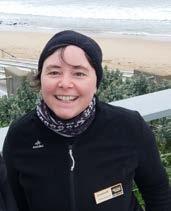
I am a quantitative ecologist, driven by a desire to advance the research fields of ecology, movement ecology, habitat conservation and species monitoring.
I obtained my PhD at the University of Aberdeen, in Scotland, UK. The topic was to investigate the foraging behaviour of two species of diving seabirds: common guillemots (Uria aalge) and razorbills (Alca torda) during their breeding season. By using combined tracking data collected with GPS, Time Depth Recorders and Accelerometers I characterised their foraging strategies both below and above water, highlighting common behaviours, differences in movements and hunting strategies.
Since my PhD I have worked with a variety of species, as Arctic and Northern Hemisphere seabirds, Arctic terrestrial mammals, Mediterranean marine turtles as well as Antarctic species! In general, I focus on research questions related to animal movement processes, their responses to environmental change and their link to population dynamics and life cycle strategies. I use biological data (e.g., accelerometers, GPS, or SRDLs devices) to understand how, where, when and why animals move. I love coding, modelling, I dive into statistical and individual based modelling, but ask me to come out in the field with you, and I’ll be the happiest person on the planet!
I am joining the School of Ocean Sciences at Bangor University as Lecturer in Marine Top Predators Ecology and I look forward to developing my research further on the effects of changes in the availability of marine resources on energetics, fitness, behaviour, decision making and habitat use of marine predators.

My background is in physics and ocean sciences.
I completed my PhD in 2015 at Bangor University under the supervision of Prof David Bowers
The topic was tidal modulation of seabed light and its implications for benthic algae. Following this, I undertook post-doctoral research on deep-sea biophysical interactions at Bangor and later at the University of Bergen in Norway. In 2020, I returned to the UK, working for Natural Resources Wales, as part of their offshore renewable energy programme. More recently, I have been working between Bangor and Oxford Universities on an ocean-atmosphere climate change project, ArctiCONNECT. I had just started to work on a project (called QUICCHE), looking at the Agulhas leakage of Indian Ocean water into the South Atlantic, when I secured my lectureship position in biological oceanography.
I have broad research interests lying at the interface between physical oceanography and marine ecology. I am interested in the following themes: marine optics and primary productivity; abiotic conditions and physical processes influencing the biogeography, structure, and function of marine ecosystems (both on the continental shelf and in the deep ocean); physical oceanographic phenomena and marine animal behaviour; ocean structure, circulation, and global ocean change, and their implications for biophysical ecology and climate regulation.
Increasingly, I realise that almost any quirky or unusual biophysical interaction holds a great interest for me. I’m looking forward to nurturing a new generation of biological oceanographers from amongst our amazing students at Bangor, and to pondering the inevitable ‘I wonder why…’ sentiments of all those who have witnessed biological and physical systems interacting in nature.

I have had a long and enjoyable history with SOS since starting my undergraduate masters (MSci) in Marine Biology in 2007.
It is here that I developed my passion for hands-on field and lab research developed as I worked on the ecology of invasive pacific oysters in the Northern Europe. After a short stint as a research assistant and a very exciting 3-month trip to VIMS I started my PhD in SOS under the supervision of Prof Chris Richardson in 2013.
My work developed age determination methods for the common whelk (Buccinum undatum) using a wide range of approaches from aquarium-based growth experiments to advanced geochemical techniques that we used to reconstruct the life history of individual animals. The ageing tools we developed are now in use across several fisheries for this species. This project solidified my interest in robust fisheries management and the different approaches that can be taken in aid of this goal.
Broadly speaking, my current research focusses on the ecosystem-based approach to fisheries management. This means that instead of focussing solely on the animals that are being targeted by fishing, we also account for impacts on other non-target species (i.e. bycatch) as well as the impact on dependant and related species that may be predator or prey to target species. Since 2018 I have been working as a fisheries ecologist at the British Antarctic Survey, where I have researched a wide array of topics related to the fisheries around the island of South Georgia. From studies focussed on the recovery of important fish species post-exploitation to large-scale drone surveys of key higher predator species (e.g. penguins and seals) that rely on Antarctic krill (a fished species), all of my work fits under the umbrella of the ecosystem-based approach to management.
I am delighted to start my new post in SOS and I hope to bring lots of my experience in the Antarctic into my teaching. I am excited to starting lecturing next semester and look forward to teaching new generations of fisheries scientists.

After studying as an undergraduate (Marine Sciences, Southampton, 1995) and MSc (Ecosystems Analysis and Governance, Warwick, 1999) Alec worked in applied marine biology globally for the next ~20 years, undertaking work such as marine ecological surveys, fisheries observing, and Environmental Impact Assessments (EIA) of marine developments.
This included a spell in Kuwait (2001-2003) where he set up and ran marine surveys associated with Gulf War oil spills. While working he undertook a PhD by Published Works through SOS on the sharks and rays of the Persian/Arabian Gulf, based on fieldwork with artisanal fisheries in Kuwait, Qatar, UAE and Bahrain. In 2019 he changed career paths and made the jump to academia joining SOS as a postdoc on the Sustainable Fisheries Wales project.
Alec’s research aims to inform the sustainable management and conservation of marine biota, particularly sharks and rays. Geographic focus spans local waters of Wales and the Irish Sea to data-poor regions (Arabia, Africa), with a focus on highly threatened and poorly-known species. His research has included discovery of shark and stingray species, documenting regional sawfish extinction, and identifying a bull shark nursery area. As part of his involvement with the IUCN Shark Specialist Group he has contributed to Red List Assessments, conservation initiatives (e.g. Global Sawfish Conservation Strategy) and the development of Important Shark Areas. In addition to fieldwork, he typically uses inexpensive, alternative and opportunistic sources of data (fish markets, fishers ecological knowledge, museums, historical documents, angling records, online).
He is increasingly involved in marine historical ecology, using a range of documentary sources to understand past baselines, long-term change, and to directly inform modern-day management of marine species. Recent research at SOS by Alec includes identifying critical shark habitat from historical sources; characterising catshark bycatch in lobster fisheries; identifying internet trade in the critically endangered ‘shark-ray’ (Jennifer Pytka MSc); and using angling data to understand stingray distribution (Ryan Charles MSc).

Winnie is a marine biologist and plastic pollution expert whose research focuses on understanding the environmental prevalence, fate and impacts of (micro)plastics on organisms and ecosystem functions.
Ultimately her work contributes towards assessing the environmental risk of (micro) plastics and supporting effective interventions to reduce plastic waste.
Since completing her PhD in 2019, where she researched the current and historic presence of microplastic pollution in the deep-sea ecosystem, Winnie has worked within the International Marine Litter Research Unit, at the University of Plymouth. As ‘eXXpedition Round the World science lead’ she examined the global land-sea flows and movement of plastic pollution working with >240 women citizen scientists from 40 nationalities. More recently her work has focussed on the environmental degradation and impacts of biodegradable and bio-based plastics (often termed as ‘bioplastics’ or ‘alternative plastics’). Her research has led her to study plastic pollution in a variety of terrestrial and marine environments, from agricultural soils and coastline to some of the most remote parts of our planet including the deep sea and oceanic gyres.
Winnie is a passionate science communicator and authority on plastic pollution; she has spoken at the UN Global Plastics Treaty negotiations and the British and European Parliament. She is an active member of the Scientist Coalition for an Effective Plastics Treaty, supporting progress towards the development of a legally binding instrument to address plastic pollution, and attended the 3rd and 4th Intergovernmental Negotiating Committee sessions in Kenya and Canada.
Winnie graduated from Bangor University (BSc Zoology) and is looking forward to returning (now on the other side of the lectern) as a lecturer in Marine Pollution. Also, as an avid hiker and trail runner she is keen to explore all North Wales has to offer.
A reunion for School of Ocean Sciences alumni was held at the University on 24 – 26th May 2024.
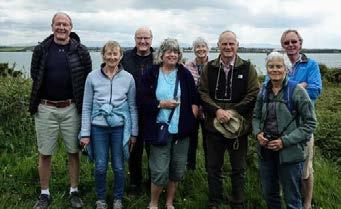
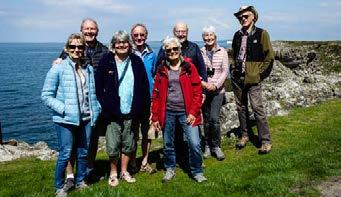

The reunion marked the 30th anniversary of the establishment of the School of Ocean Sciences Alumni Association (SOSA), founded by Sinclair Buchan and George Floodgate. Sadly, both Sinclair and George have passed away, but the reunion was a great opportunity to celebrate their work and the success of the association.
The weekend started with an exclusive Prosecco evening at Anglesey Sea Zoo. Guests were treated to a special behindthe-scenes guided tour by Frankie Hobro, alumna and Director and Owner of Anglesey Sea Zoo, and her team. They then enjoyed a buffet and a glass or two of fizz!
On the Saturday, alumni could join tours of the RV Prince Madog, experience a Ribride down the Menai Strait and meet current staff for afternoon refreshments in the Marine Centre Wales.
The main reunion dinner was held in Neuadd Reichel in Bangor on the Saturday evening. After welcome drinks, where alumni had the opportunity to share their photos from their time at the University, guests heard from Mick Cook, Chair of SOSA, Professor Edmund Burke, Bangor University’s Vice-Chancellor and Prof John Turner, Head of School. It was great to welcome graduates from across the decades and to hear everyone’s stories of their time at the School of Ocean Sciences and what they have gone on to do since graduation.
The weather was kind on the Sunday morning when the reunion was wrapped up with a geological walk to Llanddwyn, led by Dr Dei Huws and Prof Colin Jago
Thank you to everyone who joined us for the reunion. We appreciate your ongoing commitment, loyalty and interested in The School of Ocean Sciences and we hope to welcome you back again soon!
We would like to thank the generosity of our alumni in supporting student summer internships. These internships allow our students to become involved in cutting edge research projects within the School of Ocean Sciences.



This year summer interns include:
Alex Norman (BSc Marine Vertebrate Zoology) who will be investigating the impact of seagrass on seabird and cetacean activity with Dr Martyn Kurr, generously supported by the Barry Paine al Fund.
Laney Laws Randall (BSc Marine Vertebrate Zoology) will also be working on the same project generously supported by the Gavin Winsborrow al Fund.
Luke Austin (MSci Marine Biology) who will be measuring biomass from deep-sea coral samples from the North Atlantic carbonate mounds with Dr Craig Robinson, generously supported by the Barry Paine al Fund.
Rebecca Gillmore (BSc Marine Biology) who will be monitoring northern gannet populations in North Wales with Dr James Waggitt, supported by the Eilir Hedd Morgan al Fund.
Dafydd Thomas (BSc Ocean and Geophysics) will be examining modern analogues for tidal proxies with Prof Mattias Green generously supported by the Piers and Lesley Chapman Summer Bursary.


The Gaynor Cemlyn-Jones Trust is one of Bangor University’s main historical donors, having given major donations to support a number of projects at Bangor University over the years, most notably to the School of Ocean Sciences.
Miss Gaynor Cemlyn-Jones was born in London, the daughter of the late Sir Wynne and Muriel Cemlyn-Jones. She spent childhood holidays with her grandmother in Penmaenmawr before moving to North Wales. In the 1950s, she had a home built in Menai Bridge and became the island’s High Sheriff in 1968.
The Gaynor Cemlyn-Jones Trust was established in the 1990s, with an initial donation of £1,000 for an underwater camera. Her backing then helped set up permanent marine archaeology research and student fellowships at the University. Other projects within the School of Ocean Sciences supported by the Trust include the installation of a plasma wall in the Marine Centre Wales and the Marine Video Archive Project, which carried on the work of the late Dr Cecil Jones in developing an online digital facility to view and analyse video footage of the marine environment in the Menai Strait (see below).
Emma Marshall, Head of Development & Alumni Relations Office said, “Bangor University values the generous contribution the Gaynor Cemlyn-Jones Trust continues to make to the School of Ocean Sciences and elsewhere within the University, which enables us to provide students with opportunities that would otherwise be impossible. We look forward to working with the Trust on future projects.”
Over the past four years, Mirko Barada has been investigating these questions during his PhD Studentship, funded through the Gaynor CemlynJones Trust.

The PhD focused on one of the UK’s west coast estuaries, the Dyfi in mid-Wales. From Cornwall to Northern Ireland and Scotland, there are many similar Atlantic-facing estuaries that are relatively small and drain steep and mountainous catchments and, hence, are vulnerable to compound flooding from prevailing southwesterly Atlantic storm tracks that result in extreme storm surges and heavy rain (and high river discharge) occurring simultaneously in the estuaries leading to heightened flooding.
Today, over 2.2 billion people live within flood risk areas. This makes 20% of the world’s population vulnerable to flooding, either from the sea, rivers or rainfall. In the UK, estuary compound flooding is one of the top priority risks with damages costing over £500 million per year, despite high standards of coastal flood defence. Yet we know surprisingly little about how compound flooding occurs and how we can manage catchments and coasts to minimise the risks. For example, is estuary flooding sensitive to the intensity and timing of rainfall relative to the tidal cycle and the arrival of a storm surge? Does estuary size and shape matter? What management options will alleviate flooding? How will flood risk change due to sea-level rise and changing storm patterns?
Mirko’s advanced geospatial mapping skills has helped him develop high resolution computer-based flood inundation models of the Dyfi estuary. Several different versions of the model were made, to test different management scenarios, e.g., ‘hold the line’ keeping the present-day estuary shape, or ‘remove’ the line’ that restored the estuary back to its natural shape similar to pre-industrial times before land reclamation occurred in the lower estuary. Mirko has then simulated thousands of extreme event scenarios using his different management models to understand the sensitivity of such small estuaries to a range of historical, ‘what-if’, and future storm conditions.
Mirko’s results suggest that there is much we can do to mitigate flooding through management scenarios such as land use change and coastal realignment. In contrast, high water levels in larger estuaries tended to be less sensitive to compound events and also less sensitive to management options. Looking forward, sea-level rise is expected to rise by 0.5 - 1 m this century. Coastal management needs to be put in place now for future-proofing to be effective in the decades to come.
By Kathryn Davies (MSci Marine Biology and Zoology) and Alicja Sobocinska (MSci Marine Biology and Oceanography) supervised by Prof John Turner.
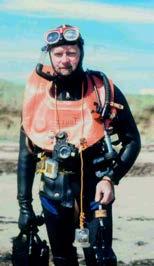
Cecil Jones began studies at Bangor University in 1963 in the Psychology Department where he was one of just three students - the first intake of psychology students within the university. In 1966 Cecil became a Lecturer in the Department of Extra Mural Studies, lecturing in Psychology. By 1968 he had developed an interest in the marine environment and man’s relationship with the sea. He became interested in diving and made the connection between his studies and diving by delving into the psychology of diving. Cecil completed his PhD, and he became a well-known diver also became fascinated by the marine life and the archaeology around the coasts of Anglesey, including the Menai Strait.
His first substantial project was of the slate wreck at Pwll Fanog in the Menai Strait. This fascinated him and grew his interest in the history of North Wales, including marine archaeology, folklore, and the marine life. His love of the ocean grew while spending years diving and filming in the Menai Strait and other coasts around Gwynedd and Anglesey. He established the North Wales Marine Study Group and soon after won the Gold Medal Duke of Edinburgh Prize of the British Sub-Aqua Club for his leadership of the project “Monitoring the Menai Strait” in 1985. In 1987, Cecil also won the Duke of Edinburgh Prize of the British Sub Aqua Club for project leadership of an “Underwater exploration of the Menai Strait
Cecil won research funds from the Pen-y-Clip Trust and also helped establish the Gaynor Cemlyn Jones Studentship to fund a programme of PhD studies. He retired in 1998 from his post as a Lecturer in the Extra Mural Studies Department and became associated with the School of Ocean Sciences as the Gaynor Cemlyn-Jones Research Fellow. He diversified his project interests into Marine Environmental History with the History Department in 2006.
Cecil retired in 2016 but continued to archive and help digitizes his diving footage until his death. He left an office full of research and artifacts from years of research and diving in the form of numerous images, reports, documents and artifacts. His legacy required sorting and archiving appropriately, such that it can be used in current and future biodiversity research. Through the additional generosity of the Gaynor Cemlyn-Jones Trust we receive support for the Marine Video Archive Project and have, over the past 6 months been able to archive Cecil’s extensive records.

In April we were delighted to welcome the North Wales Marine Conservation Conference back to the School of Ocean Sciences.



Second year Marine Biology student Ruth Flynne tells use more:
The second Annual North Wales Marine Conservation Conference was held in Marine Centre Wales on Saturday 6th April. It was wonderfully hosted and organized by Stef Krafft (School of Ocean Sciences and NWSRO) and Dr Martyn Kurr, with approval from Prof John Turner and help from Laura Haggett. Stalls from various conservation organisations operating in North Wales brought literature, artifacts, knowledge and enthusiasm to approximately 80 people who attended ranging from school age to pensioners. Each organization, many of whom work with volunteers in the marine conservation field, was eager to raise public awareness of the conservation issues and needs and encourage the public to get involved. A series of six short talks shared some ways to do this by contributing to citizen science research and conservation projects either in the field or from home.
A wide range of scientific research posters provided by Bangor university students covering topics from seabirds to pollution, porpoises to ocean temperature also drew much interest. Many of the poster authors were on hand and keen to engage with the public discussing their research. Clearly word had spread since the inaugural event last year with an approximate 60% increase in attendance for 2024. This was a well-run and engaging day that enthused many people. May it continue to flourish in the future.

The School of Ocean Sciences world leading reputation for ocean sciences research is built on making observations at sea.
As such it is important that we give our students the best opportunities to volunteer, gaining valuable seagoing experience building on that gained from their studies. Here we have reports from students who participated in fieldwork this spring.
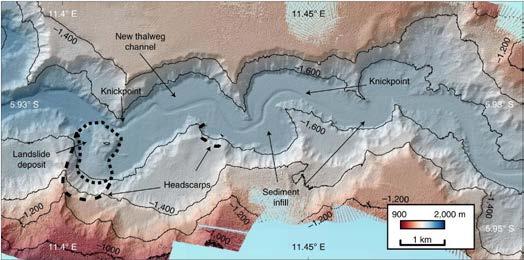

“In February and March of 2024, Dr Jaco H. Baas (SOS) and Prof. Pete Talling (University of Durham) gave us, three Bangor students, the opportunity to board the RRS Discovery and help survey and research the Congo submarine channel off the coast of west Africa. The Congo channel is one of the most important locations for giant underwater landslides in the world’s oceans, acting as a gateway for the transfer of vast quantities of sediment, nutrients and pollutants from land into the deep ocean. We are grateful for this enriching experience, and excited to share our enthusiasm here.
Justyna Bulawa (MSc Applied Marine Geosciences), Edward Standring (MSci Geological Oceanography), and I began our journey in Walvis Bay, Namibia. Hear we met the rest of the scientific team and saw our home for the next six weeks, the RRS Discovery. Although many, many miles from Wales we stumbled across a Welsh coach sitting haphazardly on the docks, a mere few feet from our ship. It was almost as if a lil’ bit of Wales was coming with us, despite the Welsh flag tucked away in Edward’s backpack.
Our first four days were spent learning names and faces of the crew and scientists while we transited to our first mooring location in international waters off the coast of Angola. Our team of scientist was split into day and night shifts. We were on the night shift with the chief scientist Prof. Pete Talling, and Bangor SOS Geological Oceanography alumnus Dr Megan Baker, and Canadian researcher Rebecka Englert. Despite the hard work, we had time for star gazing in a location where light pollution is non-existent. We had never seen the Milky Way so bright and stunning before in our lives. The day shift harboured researchers and PhD
students from France, Chile, Germany, and Denmark. It was both humbling and exhilarating to be surrounded by so many talented and academically gifted people from all over the globe.
We deployed four near-bed moorings in the lobe region of the submarine channel to record the physical properties, such as flow velocity and temperature, of giant underwater landslides (sediment gravity flows) that occur frequently in this area. Alongside this, we deployed CTDs (Conductivity, Temperature and Depth probes) close to the seabed in various locations in the upper and lower channel and lobe.
We used piston corers to collect 10–15 m long sediment cores of sediment along the entire channel, and also deployed multicorers to collect shallow seabed cores, sometimes as far as 5 km below the ocean surface! These corers took several hours to reach the sea bottom.

Once the cores made it onto the ship, it was go-time for the science crew. The standard protocol required us to split and label the cores in an organized fashion and to describe (log) the sediment within the cores. Core logging was my favourite task, as it allowed us to see the product of our hard work. We found interesting crystals that can only survive in deep ocean waters, because they dissolve when brough to the surface. We took a small crystal home — until it dissolved!
was honoured to be the youngest crew member on the ship, and I spent an unforgettable 22nd birthday in the middle of the Atlantic Ocean. With me, most of the scientific crew, took part in the dreaded traditional ceremony of ‘crossing the line’, crossing the equator. For those in the know, I am now a proud “Shellback” with a certificate to prove it. For those unaware of this gruesome tradition, count yourselves lucky …


Overall, this experience has improved our skills as marine scientists, especially in the fields of sedimentology and geophysics. After graduating from Bangor University in July 2024, I will look back with fond es and cherish the opportunities given to me in becoming the person I am today. Now I look forward, head held high, excited to see where the future will take my fellow students and I, as we soon leave university, become alumni, and start our professional careers.”
By Maya Harries (2nd year Marine Biology)
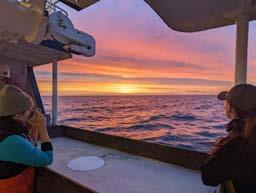

This spring, I had the incredible opportunity to join the Prince Madog on its annual survey of scallop stocks around the Isle of Man. This survey, which Bangor University has undertaken since 2008, provides data across the island’s territorial sea to feed into stock assessments for king and queen scallops. These stock assessments allow Bangor to provide advice to the Isle of Man government to enable sustainable management of these important fisheries.
Preparation for the journey was intense but exciting. The team aboard the Prince Madog comprised marine biologists, engineers, deck crew, and 2 fellow undergraduate students, Isaac Bryn (Marine Biology) and Miranda Hutchinson Hartley (Marine Biology and Oceanography). We embarked on a 10-day expedition. Each day, we started early, with the team ready to deploy scallop dredges at a number of different fishing grounds around the island. The primary focus was to assess the stock density and age of king and queen scallops, which are crucial species for the local fishing industry. We measured and recorded the weight of the total catch, then individually aged, sized, and recorded damage scores for each scallop. Our aim was to provide accurate data to help manage and sustain the scallop fisheries.
In addition to scallop data, we meticulously recorded bycatch, capturing data on species unintentionally caught in the dredges. This included a variety of fish, crabs, octopus, skate, and at one site an unconscionable quantity of brittle stars. Analysing bycatch was an exciting part of the cruise for me. I was able to examine some incredible species up close and my marine organism ID skills improved rapidly.
Working at historical fishing sites added a fascinating layer to the research. These sites have had data recorded since the 70’s which provide valuable insights into how marine ecosystems have changed over time. The data we collected will contribute to long-term monitoring efforts and help inform sustainable fishing practices.
This hands-on experience was invaluable as an undergraduate student. It provided a deeper understanding of marine biology and the complexities of fisheries management and also emphasised the importance of preserving marine habitats and supporting sustainable practices. As I look forward to a career in marine science, this research cruise has been a defining chapter in my academic journey and has helped me grow as a budding scientist.




Morgan Rice (second year Marine Biology student) tells use about her recent trip to Bardsey Island with the Bangor University Birdwatching Society
Bardsey Island is a small island located off the Llŷn Peninsula coast comprising of 440 acres of land and is the first site in Europe to be internationally recognised as a Dark Sky Sanctuary. Despite its size the island is teeming with wildlife and, with a resident colony of around 30,000 Manx Shearwaters, every acre holds something new to explore. Bardsey is also a hotspot for rarities including visits from rare migrants such as The Black-browed Albatross, the yellow-star anemone (commonly found in the Mediterranean), and two species of nationally rare lichens. Due to its high biodiversity, Bardsey Island has been designated a Site of Special Scientific Interest as well as a National Nature Reserve. This makes it the perfect location for the Bardsey Lodge and Bird Observatory, which was established in 1953, to carry out its work.
I had the privilege of staying at the Bardsey Lodge and Bird Observatory with Bangor University Birdwatching Society for a week in April, where we joined the staff in their daily duties. Upon arrival we were greeted by Steve Stansfield (the warden at Bardsey) and staff members: Emma Stansfield, Ed Betteridge, Kate Fox and Jonathan Dodds, who outlined our itinerary for the week and gave us books kindly donated by Wildsounds Books.
Steve Stansfield has assumed the position of warden at Bardsey since 1998 and his passion for wildlife is truly palpable. Being invited as a speaker at the International Bird Observatory Conference in 2019, Steve’s aims are clear, promoting a better future through educating younger generations about conservation. This was reflected in our stay, where we received talks from staff members detailing topics ranging from how to pursue a career in bird conservation to the global importance of observatory work.
We were also given the opportunity to partake in practical work, contributing to the daily breeding and migratory bird census and participating in ringing and surveying the island’s resident Manx Shearwater colony. Surveying and monitoring the Manx Shearwater population is one of the most important aspects of work carried out by the observatory. Since Bardsey Island is regarded as the fourth largest of only four major Manx Shearwater colonies in the world, everyone felt honoured to participate.
Staying at Bardsey Lodge and Bird Observatory was a remarkable experience, and I would encourage anyone interested in wildlife or conservation to visit. During my time on the island, I was delighted to ‘tick off’ many firsts including a pair of peregrine falcons, a fly-over from a migrant marsh harrier, numerous puffins and even the first cuckoo of the season. I would like to give thanks to: Joel Tragen for organising the expedition, Steve Stansfield for sharing his knowledge and experience, and The British Trust for Ornithology for providing funding towards the stay. I would also like to thank staff and volunteer(s) Emma Stansfield, Ed Betteridge, Kate Fox and, Jonathon Dodds for their enthusiasm and insight into the benefits of observatory work.
The observatory relies on funding to carry out it’s important scientific research, if you are interested in donating to the observatory’s work please visit: https://www.bbfo.org.uk/donate
A film in the Time for Geography series featuring the specialist knowledge of Yueng- Djern Lenn, Professor in Physical Oceanography, has been highly commended in the Geographical Association Publisher Awards.
Co-developed by Yueng-Djern Lenn, Physical Geography of the Southern Ocean explores the unique physical geography of the Southern Ocean, the ocean around Antarctica, which has a fundamental role in our climate and ecosystems.

The film was created with Time for Geography, an education and outreach project that creates free educational videos on geography. The project brought together a collaborative team of teachers, academics, developers and filmmakers with a passion for geography.
Yueng-Djern said, “It’s been brilliant to share my knowledge about the mighty Southern Ocean and its unique properties which are essential for marine life. I am honoured that this video has received the Highly Commended Award and I’m excited that it will help with teaching school pupils about how the Antarctic Ocean is crucial for fostering environmental awareness, understanding climate change and promoting biodiversity appreciation.”
This achievement adds to the University’s track record of successful collaborations with other universities to produce Time for Geography educational videos. A Bangor video involving Jaco Baas and Jonathan Malarky about tsunamis, in collaboration with the University of Dundee, won the Silver Publisher’s Award by the Geography Association in 2020.
Watch the Physical Geography of the Southern Ocean video here.
In a first for the School of Ocean Sciences, an undergraduate practical has been published in a peer-reviewed journal, the open-access ESA (Ecological
Society of America) Journal Teaching Issues and Experiments in Ecology.

The new paper promotes open education, with the materials fully accessible, making the knowledge available globally regardless of wealth or status, to support teaching that engages with research, theory, and detailed analytical enquiry to stimulate learning.
The focus of the paper is a ‘Data Set’ practical: ‘Reorganisation following disturbance: multi trait-based methods in R’. Trait-based approaches in ecology are now commonplace. Originating in terrestrial plant ecology, multi trait-based methods are increasingly applied to understand mechanistic rules for community assembly. Using morphological and ecological traits as proxies for the ecological roles of species, these methods translate multivariate species data into synthetic, complementary, and responsive indicators of ecosystem state using increasingly refined and mathematically demanding analytical tools typically applied with accessible packages in the statistical programming tool R. The practical teaches students to use R to examine how coral reef fish communities are impacted by a severe marine heatwave which resulted in mass coral bleaching on the Great Barrier Reef, Australia. The practical offers integrated teaching of computational literacy alongside ecology, a critical skill STEM students must acquire to meet the demands of the 21st century but remains lacking in natural science subjects.
The work has been published by Dr Laura Richardson, Dr Jennifer Shepperson, Dr Laura Grange, and Dr Martin Skov, in collaboration with researchers at the University of Montpellier, the Australian Research Council Centre of Excellence for Coral Reef Studies and Global Fishing Watch.
Paper: Laura E. Richardson, Camille Magneville, Laura J. Grange, Jennifer L. Shepperson, Martin W. Skov, Andrew S. Hoey, and Adel Heenan. (2024). Reorganisation following disturbance: multi trait-based methods in R. Teaching Issues and Experiments in Ecology, Vol. 20.
We hosted our annual careers fair in March, emphasising the vast job potential within the rapidly expanding marine sector of the UK economy.

This event is instrumental in bridging the gap between our future graduates and the job market, offering students a chance to reflect on the necessary skills for various marine sector roles.

This year’s exhibitors provided students with a comprehensive view of career prospects in industries that support sustainable energy transition, and in organisations dedicated to maintaining oceanic, seabed, and coastal habitat integrity. Exhibitors represented Environment Platform Wales, The Crown Estate, Ecoscope Ltd, Morlais (MCRP Project), Robertson Geo, North Wales Wildlife Trust, Ymgynghoriaeth Gwynedd Consultancy (YGC), Intertek Energy & Water, RPS, Spectrum Offshore and RWE. Bark Europa joined us again, inspiring students with opportunities to sail globally and educate other sailors onboard about the oceans’ crucial roles.
The exhibitors, many of whom are Ocean Sciences alumni, gave very positive feedback about the students they met, with quotes including “Keen and inquisitive”, “Asking the right questions to learn more”, “Passionate”, and “Showing a positive attitude, which is very important to us”.
Commenting organiser Prof. Katrien Van Landeghem said: “Our careers fair aims to showcase the diversity of job opportunities in the fast-growing marine sector and highlight the transferability of our students’ exceptional skills as ocean scientists to various interconnected sectors. With over 100 students attending and 16 amazing student volunteers assisting, it’s evident our future graduates understand their potential roles in delivering resources and services and that they are equipped to address societal concerns related to climate change and the crucial role our oceans play in those processes.”
The event underscored the comprehensive preparation our degree courses at the School of Ocean Sciences provide, equipping students to tackle these challenges effectively. The combination of strong skills and heightened awareness ensures that their future professional contributions will make a significant impact. This careers fair has been pivotal in helping students understand how they can make a difference in the marine sector and far beyond.
For more information about the School of Ocean Sciences and the annual careers fair, please contact Katrien at katrien.vanlandeghem@bangor.ac.uk
Dr Alec Moore has been awarded a Bangor University Innovation and Impact Award for his project ‘
Clean catch Cymru: innovative low-tech solutions to benefit fishers and sharks in Wales’.
The project will support a Research Assistant in SOS, fieldwork, and engagement with industry partners from July 2024-July 2025.
Postgraduate students from all corners of the globe will learn about the geological history of our region.

Funded by the International Association of Sedimentologists (IAS), this programme gives participants the opportunity to collaborate, network and work with experts on new and exciting topics in sedimentary geology. Previous Summer Schools were held in Switzerland, Argentina, China, Bahamas, Spain and Bonaire. Entitled Northwest Wales: 800 Million Years of Earth History in 800 km2, the Summer School will be organised by Dr Jaco H. Baas (School of Ocean Sciences), Dr Dei Huws (School of Ocean Sciences, GeoMôn UNESCO Global Geopark), SOS alumni Dr Megan Baker (Durham University) and Dr Stephen Lokier (University of Derby). The programme will cover the geological history of Ynys Môn, Eryri (Snowdonia), and the Ceredigion coast in seven days of fieldwork, with special reference to the role of geology in the energy transition from a hydrocarbon-led to carbon-neutral world.
“The Summer School is an excellent opportunity to showcase the amazing geology of our area. This includes the Precambrian (about 1000 to 540 million years ago), when our modern atmosphere and ocean developed, and early life evolved; the Cambrian (about 500 million years ago), when Wales was part of an tectonically active region with volcanoes and regular earthquakes, similar to present-day Japan; the Devonian (about 400 million years ago), when Wales was a Sahara-type desert; and the Carboniferous (about 300 million years ago), when coral reefs flourished in our region”, explains lead organiser Dr Baas of the School of Ocean Sciences. He adds: “We are excited to show the participants that England and Wales’ oldest stromatolite fossils, stony structures built by colonies of cyanobacteria, are present on Ynys Môn, and that the formative years of Charles Darwin as a geologist, before he acquired fame as a biologist, were in Parc Cenedlaethol Eryri”.
New research from Dr Iestyn Woolway, collaborating with Lancaster University and the UK Centre for Ecology & Hydrology shows that floating solar photovoltaic (FPV) panels on lakes and reservoirs could meet all electricity needs for some countries.
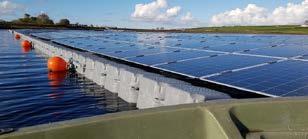
By analysing nearly 68,000 lakes and reservoirs around the world, researchers found that covering just 10% of these surfaces with FPV could generate 1302 TWh annually, four times the UK’s electricity demand. FPV systems save land, increase efficiency, and may reduce water evaporation and algal blooms, though more research on environmental impacts is needed. Countries like Papua New Guinea, Ethiopia, and Rwanda could fully meet their electricity needs with FPV
Paper: Woolway et al (2024). Decarbonization potential of floating solar photovoltaics on lakes worldwide. Nature Water, https://doi.org/10.1038/s44221-024-00251-4.




In May the School of Ocean Sciences Môr Ni Gwynedd project hosted Pentref Bwyd Môr/ Seafood Village at Gŵyl Fwyd Caernarfon (Food Festival).
Collaborating with the College of Arts, Humanities, and Social Sciences and Pontio, the Seafood Village showcased a fusion of gastronomy, science, arts, and culture and welcomed nearly 2,000 visitors to celebrate Northwest Wales rich coastal heritage.
Dr Julie Webb, Môr Ni project, commented, “The Seafood Village owes its success to the dedication, energy and enthusiasm of the project team, University colleagues and students who worked tirelessly on the day to showcase all that’s special about our seas, the incredible food that they provide and the important role they play in safeguarding the planet. The evident demand for greater public awareness and access to sustainable local seafood was reflected in the participation of talented local chefs and the enthusiastic attendance at all demonstrations. This was a huge undertaking and shows the power of cross college and community collaboration.”


New research published in Nature Geoscience indicates that by the end of this century, land-locked lakes on the Tibetan Plateau are projected to increase exponentially, reversing their shrinking trend.

This growth, driven by increased rainfall and glacier meltwater due to climate change, could result in a 50% expansion of these lakes, with water levels rising by up to 10 meters.
Dr Iestyn Woolway, School of Ocean Sciences, along with colleagues from China, Saudi Arabia, the USA, and France, estimates that the volume of water in these lakes will increase fourfold by 2100. The increased lake surface area will also mean the loss of critical land area, for agriculture, human habitation, critical road and rail networks and economic disruption.
It will showcase tropical reef fish sustainable cultivated here in Menai Bridge through the SNAP project (featured in the June 2020 edition of the Bridge). The tank will be maintained by a group of students providing them experience of managing aquaria, and in particular biogeochemical cycling. It will also provide a quiet sitting area to promote well-being.



The School of Ocean Sciences has recently purchased a new laboratory facility for measuring the size and shape of particulate matter, the Microtrac Sync, supplied by Verder Scientific UK and funded by Bangor’s Ocean Renewable Energy work package of the Smart Efficient Energy Centre (SEEC).

This facility replaces the Malvern Mastersizer 2000, which was retired after serving its purpose for more than 20 years.
The Microtrac Sync uses laser diffraction to quantify the size distribution of a wide variety of particle types, including siliciclastic clay, silt and sand, carbonate particles, microplastic particles, and organic material. The size measurement range of the Microtrac Sync is 0.24 to 2000 micrometres (in dry mode) and 0.02 to 2000 micrometres (in wet mode), thus taking capabilities into the nanometre range. The Microtrac Sync uses a 5.2-megapixel, 62 fps camera to determine the shape of particles in the size measurement range of 50 to 2800 micrometres (in wet mode) and 50 to 4000 micrometres (in dry mode).
Size and shape characterisation of particles lies at the heart of many applications in Ocean Science, such as the erodibility of the seabed (for example around the foundations of offshore wind turbines), the reconstruction of physical process and environments in the geological past, the areal distribution of microplastics in seas and oceans, the turbidity of seawater above coral reefs, and the health of benthic ecosystems.
One of the first research projects that uses the Microtrac Sync is led by Dr Jaco H. Baas, who also manages the Microtrac Sync laboratory in the School of Ocean Sciences. This project investigates the shape of Hydrobia shells, comparing the shape characteristics of whole and broken/abraded shells, and mixtures thereof. The aim of the project is to automate the process of distinguishing between in-situ shells and shells transported by waves and tides, using it as a test case for measuring the abrasion and fragmentation of a wider range of particle types.
that led to a new branch of physical oceanography





The 2024 EGU Assembly in Vienna saw a record number of attendees, with over 20,000 attendees with a big presence from Ocean Sciences.
The conference gave us the opportunity to catch up with many SOS alumni. These included:
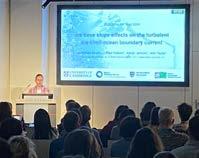

Josephine Anselin (MSc Physical Oceanography) who gave a presentation about her PhD work at Cambridge University and British Antarctic Survey entitled: “Ice Base slope effects on the turbulent ice shelf-ocean boundary current”.
Dr Sam Hartharn-Evans (BSc Marine Biology and Oceanography, MSc Physical Oceanography) who recently completed his PhD at Newcastle University and spoke about his work on: “A new approach to understanding fluid mixing in processstudy models of stratified fluids”. Sam now has a post-doctoral research position at Northumbria University.
Dr Jim Jordan (MSc in Physical Oceanography) who following his time at Bangor completed his PhD at Imperial College London and British Antarctic Survey and recently became a lecturer in the Department of Geography at Swansea University. He talked about his work on ice shelf calving.

Dr Brad Reid (MSc and PhD in Physical Oceanography) who is also a Post Doctoral Researcher at Northumbria University and talked about his PhD thesis results: “Melt Sensitivity of irreversible retreat of Pine Glacier”
Pegah Amjadian (MSc in Marine Renewable Energy) who is now studying for a PhD in renewable energy at University College, Dublin.

The conference also provided our current students with some excellent experience. Ed Roome (BSc Physical Geography and Oceanography, MRes) who is currently working as a Research Officer on the SEAMap project (led by Simon Neill and Pete Robins) tells us of his experience:
“Being my first international conference, EGU 2024 in Vienna was a fantastic, eyeopening experience. The talks and posters, which covered many disciplines of the Earth, planetary, and space sciences, left me with some valuable insights which I can apply to my own research. It was great to see many talks showcasing the ongoing research at Bangor’s School of Ocean Sciences. In particular, the work led by Peter Robins on modelling estuarine flooding. However, the best aspect of the conference was definitely the free beer available at the end of each day! Overall, the conference was a great opportunity to network with other attendees, get to know some of my colleagues at Bangor University, and learn about some world-leading research.”


By early May this year, sea surface temperatures globally had broken temperature records every single day over the past year.
To find out more about the impacts of these record temperatures on marine life BBC Environment Correspondent Justin Rowlatt travelled to Menai Bridge to interview Prof Jan Hiddink for various new channels.
The US, Canada and Mexico were treated to a total solar eclipse in April.
Prof Mattias Green spoke to The New York Times about the eventual end of total solar eclipses on Earth as the moon gradually gets pushed away from Earth by the tides.

Honorary Lecturer Steve Backshall MBE conducted an independent survey of water samples from the River Thames, which were analysed by the University’s Wastewater Research Centre.

The analysis revealed high levels of norovirus and E. coli, raising concerns about pollution despite Thames Water’s claims of compliance with environmental laws.
BBC2’s Great Coastal Railway Journeys steamed through the glorious scenery of the Snowdonia National Park on one of Britain’s greatest heritage lines, the Welsh Highland Railway.
In the Porthmadog to Anglesey episode, Michael Portillo met Ocean Sciences Prof Lewis Le Vay and James Wilson to learn about the Menai mussel beds and Dr Lynda Yorke, senior lecturer in Physical Geography, to hear about Charles Darwin’s visit to Cwm Idwal (a popular location for Ocean Sciences field trips).


As part of the 80th Anniversary of D-day celebrations Tom Rippeth and Graham Worley were interviewed by the BBC and S4C about the war work of Prof Jack Darbyshire.

Also for the anniversary, the Bangor Fund - a fund generously supported by our alumni - enabled the construction of a “Jack Darbyshire wave analysis machine”
The original machine dates back to the war years when Jack, the first Professor of Physical Oceanography here at Bangor, was part of an elite group of physicists and mathematicians tasked with predicting waves for amphibious landings, such as the D-Day landing.
The machine will be used at open days and in student teaching to explain Fourier Analysis!



March saw the School of Ocean Sciences playing a major role in the annual Bangor University science festival
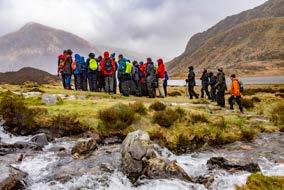


Mattias Green teamed up with Dark Skies Eryri to talk about his work on the history of the moon and its influence on the evolution of life on Earth and climate
Maria Hayden-Hughes from the Wild Oysters project showed some excited visitors (who brought their own lab coats!) how oysters feed, whilst Emer McCoy calibrated the VR experience for the next surge of interest. Any excuse to play with the new toys!
PJ Serrano, an SOS student currently undertaking her placement year with Trash Free Trails, invited visitors to guess the ages of some commonly littered items. Many of these products end up in our waters, and TFT’s managing director is currently doing a master’s by research with Martyn Kurr and Christian Dunn to explore ways of reducing littering through citizen science and stakeholder engagement.
Colin Jago led a geology walk around Cwm Idwal following in the footsteps of Charles Darwin, and many years of Ocean Science students on geology field trips!
Steve Backshall also entertained with a very well received lecture.
We were delighted to welcome Marine Biology and Oceanography graduate Caradog (Crag) Jones as part of the University 140-year Anniversary distinguished lecture series.
2023 Honorary degree recipient Crag Jones took us on a fascinating journey of his travels and experiences since graduating. From being the first South Georgia Harbourmaster, following the Falklands War, he became the first Welshman to summit Everest. A mixture of marine science and mountaineering that began at Bangor and continues a long and winding road from which he tries to make some sense about what lies ahead.
‘Crag’ Jones was the first Welshman to reach the summit of Everest in May 1995 at the age of 33. Following his successful climb, he gained popularity by hosting television programmes for young climbers and supporting Welsh climbing and walking groups. Currently working as a fisheries consultant, Crag continues to pursue climbing and expeditioning and has also taken up downhill mountain bike racing. You can read more about Crag’s fascinating journey in the Autumn 2020 edition of the Bridge.
A second phase of collaboration and research is underway between Bangor University and the UK Centre for Ecology and Hydrology (UKCEH), maximising the benefits of our co-location at Environment Centre Wales, Deiniol Road, Bangor.
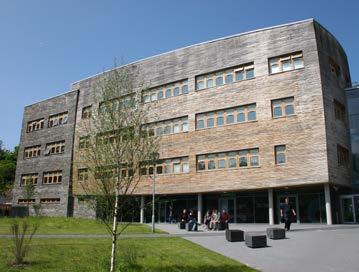
The Environment Platform Wales –Welsh Marine Evidence conference ran in the Management Centre in February and involved many ocean sciences staff. It provided an excellent platform to set out how the two organisations intend to refresh the collaborative working. The ongoing partnership has seen the University and UKCEH deliver numerous successful projects in the 16 years since ECW opened in 2007, funded jointly by Bangor University and the National Environmental Research Council (NERC).
The agreed umbrella theme for the new, refreshed relationship was announced as ‘Connecting Land, Sea and People.’ Professor Paul Spencer, Pro-Vice-Chancellor for Research said, “The new theme Connecting Land, Sea and People articulates succinctly the opportunity we all see for further interdisciplinary research which will address current funder priorities and have real-world impact.”

The University is organising a reunion for alumni on the weekend of Friday, 13 and Saturday, 14 September as part of the University’s 140th anniversary celebrations.
The programme includes a pub quiz in Bar Uno, talks and a tour covering the University’s history and its future. Alumni will also have opportunities to revisit their old Schools and Treborth Botanic Garden. The reunion will culminate with drinks and a threecourse dinner on Saturday evening. Alumni can opt to dine in the Prichard-Jones Hall or, for a limited number, in the Shankland Reading Room.
Alumni have been sharing their memories of their time here as students and their words and photos will be displayed over the weekend too.
If you are an alumnus of the University, this is a perfect opportunity to bring together your alumni friends to catch up and reminisce about the old times. Please promote the reunion amongst your networks and social media by sharing this link. DARO appreciate your support in making this a reunion to remember!
For further information, or if you have any suggestions for the reunion programme, please contact Bethan Perkins, Alumni Relations Officer.
Ocean Sciences led the University celebrations of International Women’s Day 2024 taking this year’s global theme ‘Inspire Inclusion’ as an opportunity to celebrate our women in science.
The speakers reflected on their experiences, and their journeys and talk about how they are inspiring inclusion in their fields.
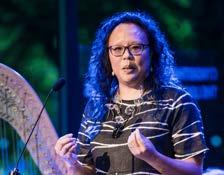
Yueng-Djern Lenn’s research looks to understand the physical processes integral to ocean overturning that impact climate in the polar oceans.
In 2021, Yueng-Djern and colleagues set up ‘Ocean Colours’, a community group to discuss racial justice issues pertinent to the marine sciences. The group intends to highlight barriers and implicit biases experienced by minority ethnic members of the School of Ocean Sciences’ community and seek solutions to be implemented by allies as well as creating a visible presence within the School of non-white scientists and students. Events are held around topics such as racism and misogyny in glaciology, inclusivity in fieldwork, and plastic pollution and environmental racism.

Kodi Edwards, from St Kitts and Nevis in the Caribbean, is studying for an MSc in Marine Biology and is a recipient of the Inclusive Bangor Scholarship 23/24. As a young black female, Kodi would like to see a greater diversity of people entering Ocean Sciences. By sharing her experiences in events like this, she hopes to inspire and encourage others to follow.

Dr Jenny Shepperson gave an excellent presentation about statistics anxiety at the Horizons in STEM Higher Education Conference in Bristol.
This conference provided an opportunity for all STEM colleagues around the UK to share their insights into teaching innovation and pedagogy and develop connections across the STEM disciplines.

I am working as part of the conservation team on Fregate Island in the Seychelles. Since leaving home in Bulgaria I have pursued my career in various countries, but Bangor will always have a special place in my heart as my second home, and the place where I learned to be a scientist and to deal with life on my own.
After completing my undergraduate course, and including my Masters thesis during Covid in Bangor, I undertook a Year Abroad internship in Portugal. I had an opportunity as an intern with CETUS Project, part of Coastal biodiversity lab in the Center for Marine and Environmental Research (CIIMAR) in Porto, Portugal. There I was part of a small team carrying out cetacean research. I also had the opportunity to join major research cruises with the Portuguese Navy and the Portuguese Institute for Sea and Atmosphere (IPMA).
I spent one month during the summers of 2021 and 2022, sailing across the Atlantic to the Azores and back as a Marine Mammal Observer. This experience gave me invaluable skills not only as a field researcher but also personally, living under unusual circumstances. After finishing my internship and officially graduating in 2022 I was hired as part of the ATLANTIDA project at CIIMAR to continue my work on data management with CETUS team.
After Portugal, I returned home to work for the Bulgarian Academy of Science as part of the Institute of Biodiversity and Ecosystem research. During that time I was determined to find a fieldwork focused job based in a tropical region. It was a long process of applying to many places and getting rejected before I landed on a few internship opportunities.
Before going to Seychelles, I worked in Greece for the summer season as a Cruise Manager on a small snorkelling boat in the Ionian Sea. This enabled me to save up for my travels to the Seychelles. Now I’m approaching the end of my 6-month internship in the Seychelles where I am part of the conservation team on Fregate Island. Here I am involved with all kinds of conservation work - from turtle patrols and nest excavations to bird ringing and bat rescuing. Of course, my favourite part of the job relates to the marine environment, for example, coral nursery maintenance and marine biodiversity surveys.

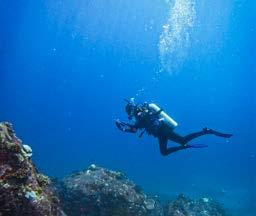
Living the dream is hard work, I’d say it’s not for everyone, but you can’t know until you try it and challenge your limits. Thanks to Bangor I’m used to challenging myself and coming out stronger, but this is only possible with great support by your side which I’ve always had in the eyes of School of Ocean Sciences and the amazing staff I was privileged to call my teachers. We really learned from the best, and you know this is true when you go to the most remote places on Earth and meet researchers and people that know about Bangor or you meet former students. So proud to be a part of this big loving community that Bangor Alumni are. Forever thankful!

“I graduated from Bangor University in 2022 after studying Ocean and Geophysics. Since then, I have been working in Ireland as both a hydrographic surveyor and a geophysicist.
I have had the opportunity to go offshore on incredible research vessels such as the Tom Crean, as well as participating in a variety of projects relating to dredging, sediment analysis, SBP, SSS, and MBES data acquisition and interpretation, cable mapping, sediment analysis and so much more. I also had had the chance to participate in nearshore projects such as the monitoring of sediment build-up and collection of borehole samples in Dublin Harbour, looking for 4,000 year old logboats in Lough Corrib, Co. Galway, searching for missing anchors in Waterford and a research survey on behalf of the Marine Institute in Lough Feeagh, Co. Mayo.
Currently, I am employed by XOcean, an ocean data company based in Ireland. XOcean acquire data using Uncrewed Survey Vehicles (USVs) which allows employees to work remotely. My role has a dual nature - I am an online surveyor and a geophysical data processor. This means that I am fortunate enough to be in a position where I am involved in the collection of data, ensuring data quality, and further my understanding of USVs and hydrographic survey, as well as being able to view this data, process and interpret it. Both roles compliment each other as what I learn in one deepens my understanding of the other.

My career in hydrographic survey and geophysics has been both interesting and very exciting so far, as no two days are the same. Technology is constantly changing and improving and it’s amazing to be on the forefront of the most modern methods of ocean data collection. My role is both challenging and rewarding and I feel that there is no end to the learning that can be done in this career ☺️”
Eds Note: The Tom Crean is named after a famous Irish Antarctic Explorer who was on the ill-fated Shekleton expedition. He is also from the neighbouring village to Laura in County Kerry!


John Gould (Menai Bridge 1964-7) sent in these photographs of the 1964 Vacation Course. Was it the first?
This was not a “posed” photograph, we all wore jackets and ties! Left to right John Gould, ??, Prof Peter Spencer (rear view), ??, R.R.(Bob) Dickson (1941 -2019). For a biography of Bob Dickson see, Remembering Loved Ones, The Times, Jan 25th 2020).
The course was the starting point of some illustrious marine science careers.
In the photo are two who were elected Fellows of the Royal Society - Profs. Peter Liss (white trousers holding flag) and John Edmond (1943 – 2001) (centre); and two who were awarded CBEs - Peter Liss and Bob Dickson (wearing deer-stalker hat).
For more on this vac course John has offered to write a longer piece for the next edition of the Bridge.
Following the passing of Sinclair Buchan many alumni shared their memories of Sinclair’s teaching of meteorology, and particularly his infamous Snowdon meteorology field course.


We are delighted to have Sinclair’s friend and colleague Dave Bowers shares his memories of the course:
‘Rain gauge under snow’: forty years of measuring Snowdon’s weather.
Every Easter, from 1969 to 2002, students from Bangor University took part in a meteorological field course on the slopes of Snowdon. The course was organised by Sinclair Buchan and, after the field course finished in 2002, Sinclair carried on making measurements on his own up to 2010, completing a unique 41-year record of the weather on the tallest mountain in England and Wales.
At its peak in the 1970’s and 80’s, the field course was a major operation, with 100 or more students deployed at 10 stations, five on the northern (Llanberis) side and five on the eastern (Pen-y-Pass) side over an 8-day period. Several university departments took part: ocean sciences, biology, forestry and agriculture. Students and staff were bussed up to Snowdon from Bangor. After a break in Llanberis, with time for breakfast at ‘Pete’s Eats’, students on the Llanberis side would walk up to their stations, while those allocated the Pen-y-Pass side would be taken on by their coach, to walk up from the youth hostel at Pen-y-Pass.
Sinclair always promised his students that he would publish the combined set of measurements in the Royal Meteorological Society’s magazine Weather, but sadly he died before he had completed that task. He had left a well-organised set of notes and records of the measurements, though, and I spoke to Sinclair’s widow Sarah about getting these published. I enrolled the help of former student Rick Nunes (we both helped as demonstrators on the field course in the 1980’s) and Rick and I have been working through the data. Sinclair’s promise will be kept, with him as principal author, in the near future.
Going through the numbers has been fun, but this article is not about the numbers. Sometimes, students (and Sinclair too) added comments to their data sheets which breathe life into those days on the mountain. The aim of this article is to report some of the comments, amusing and serious, that we have come across.
The first data sheets from 1969 have exactly the same format as those that were to follow. Sinclair had obviously found a winning formula. There are columns for wind speed and direction, air temperature, water temperature and rainfall, as well as for comments about the ‘weather’ and visibility. It could get very cold on Snowdon at Easter. Snow was not uncommon as far down as the lowest stations, especially in the early years. Early in the 1979 field course, Sinclair writes ‘unable to reach Pen-y-Pass side because of snow’. It turned out that a vehicle had skidded on the snow, overturned and blocked the road. Later, it became possible to reach Pen-y-Pass and students made it to the top station, but there was no sign of the rain gauge that had been placed there earlier. ‘Could not find rain gauge’ appears in the ‘rain’ column on the data sheet. Later that day, it was found: ‘Gauge under snow’. In 1986 it was impossible to reach the top station on the Llanberis side: ‘Rain gauge not available due to conditions preventing us from reaching Clogwyn’. No data was collected that day. In April 1989, the ‘weather was so bad we could not find the station. 12 inches of snow lying, thick cloud, visibility 30 metres.’. Air temperatures would often be below zero and water temperatures of the top lakes would get close to freezing, although there are no records of ice on the lakes.
It could also get very windy on the mountain. The worst conditions were usually a combination of wind and snow, a blizzard which reduced visibility to a few metres. In 1997, there was no measurement of rainfall because the rain gauge at Llydaw had ‘blown over’, despite being weighed down by rocks. In 1999 at the top station, Glaslyn, there is a comment that ‘the mean wind speed is 72 km/hour. Gust off scale’. The scale went up to 100 km/hour. At Cwm Dily, a student notes ‘wind pockets swirling around, loose grains and twigs spinning in column fashion. Water sucked up looking like mini tornados. At Llyn Teyrn on the same day, the ‘wind was swirling around, direction uncertain’.


Snowdon is one of the wettest places in Britain. The greatest rainfall during the field course, 93.5mm in 24 hours, was recorded at Cwm Dily, near Pen-y-Pass in 1975. Equipment could sometimes prove troublesome. The temperature of a nearby stream or lake was measured with a bucket and thermometer. In 1988, the water temperature at Llyn du’r Arddu was not recorded because of ‘equipment failure’. Whether it was the bucket or the thermometer that had let them down is not reported. In 1984 at Glaslyn: ‘anemometer broke!’. This time, though, a replacement was used for further readings. Perhaps the most dramatic statement is found in a 1989 entry for Ceunant Bach: ‘This was the time John broke his leg!’. Somehow, measurements continued after this incident.
There are examples of heroics and admirable curiosity. In 1978 a student took the temperature of all the streams feeding into Glaslyn, with a view to working out the circulation of the lake. The results are written out as a fine report in copperplate handwriting. I’m glad that Sinclair kept that; it’s a fine effort. In April 1988, data continued to be collected at the top lake on the Llanberis side (altitude 580 metres) until 9pm, and data collection resumed at 0830 on the next day. I think the students must have persuaded Sinclair to let them spend the night on the mountain.
The Easter field course on Snowdon was a great success. Over the years, thousands of students and staff (and demonstrators like me) took part and have happy memories. For many students it would be there first experience of being trusted to make environmental measurements in the field on their own. The records show that they did this carefully and diligently, in many cases showing fortitude and adaptability to bring home the data. Snowdon’s weather was measured in all conditions: blizzards, heavy rain, mist and, occasionally even sunshine. Gathering the data together, as Rick and I are now doing, we can see that – among the changes from year to year – there were steady trends. The mountain, it’s air and lakes, were gradually warming. The winds, unexpectedly, were getting weaker. And Snowdon was getting less snowy.
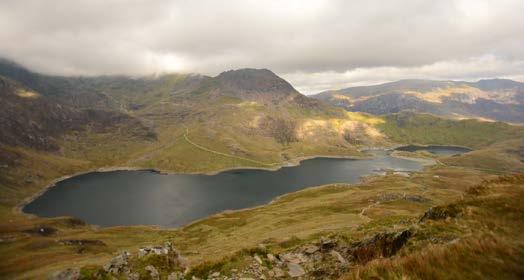



Leonard Buckley Roberts ‘Len’, passed away peacefully in the presence of loved ones on 18th February 2024, aged 70.
Len was a long serving member of staff of the School of Ocean Sciences who had been providing technical support to staff and students since 1970, rising to the position of Chief Technician before his retirement in 2016.
Len’s funeral in Bangor was attended by a great many friends and colleagues from across the University and the Fire Service in which he had served for many years.
It is with much sadness to announce that Michael Avis, known to many as “Cedric”, passed away on 12th of February 2024 after suffering in recent years with a brain tumour aged 54.
Known to many as “Cedric” he studied Marine Biology and Zoology at Bangor in the school of Ocean Sciences between 1988-1991. He will be familiar to those living in Neuadd Reichel in their first year in 1988, and he was an active member of the rowing club throughout his time at Bangor. Renowned for his enthusiasm of social events, he competed for the University rowing team throughout and became the club president in his final year. He was also a crewmember of the eight that sank in the straits in 1989. Cedric will no doubt be remembered fondly by many who studied in the SoS during that time or who’s paths he crossed during his studies.
Cedders leaves his partner and two sons. His partner is trying to raise money for Brain Tumour Research and any wishing to donate funds can do so via this Just Giving link
Nick Foster MBE

We were greatly saddened to hear of the untimely death of Tallie Brazier. She recently graduated the School of Ocean Sciences at Bangor University and was intending to return to start a MSc in September 2024.
Tallie was very involved with the Students’ Union throughout her time at the University and was well known amongst many of the staff, Tallie was also involved in student groups, as well as volunteering work, through her support for RAG. Tallie had a passion for all things Marine from a young age and also enjoyed playing football for The New Saints (TNS). She was also a member of the Sub Aqua Club and British Divers Marine Life Rescue and was a qualified PADI rescue diver. In Tallie’s memory we are collecting donations for The Seawatch Foundation which is a national charity working to improve the conservation and protection of whales, dolphins and porpoises in British and Irish waters. Tallie worked as a Research Intern for The Sea Watch Foundation last year. If you’d like to contribute, please follow this link.

Andy on the left, taking a break from his squid electrophoresis gels, hiking in the Lake District with current SOS staff member Stuart Jenkins. (1992)
Professor Andrew (Andy) Brierley passed away on the evening of the 20th of February, following a battle with an aggressive brain cancer diagnosed in November last year. He was 56 years old.
Andy was a student at the School of Ocean Sciences between 1985 and 1988 where he studied Marine Biology and Biochemistry. Following his degree he went on to undertake a PhD on the population genetics of squid at Port Erin Marine Laboratory on the Isle of Man. His PhD topic was the source of his nickname; he was known affectionately as Squid or Squidman by many of his friends. Following his PhD, Andy moved to the British Antarctic Survey where he began his lifelong fascination with krill, and then, in 2001, moved to St Andrews as a Lecturer in the School of Biology. He was promoted to Professor in 2008 and led the Pelagic Ecology Research Group (PERG) at the Scottish Oceans Institute. Andy was an active and distinguished scientist and published widely on krill biology, bioacoustics, systems level ecology, as well as fisheries, food security and human health. He was known for challenging and pushing boundaries in his research, but also outside marine science he was a passionate athlete and adventurer. Whether diving, paragliding, skiing or mountaineering Andy’s infectious enthusiasm was boundless. This energetic approach to life saw him excel in the triathlon and he qualified for, and competed in, the Ironman World Championships in Hawaii five times.
Andy is survived by his long-term partner Kirsti and daughters Abigail and Laura.
By Professor Stuart Jenkins, a contemporary of Andy’s in Port Erin.
Professor Len Evans studied Botany and Marine Biology at the University of Wales Bangor, where he obtained a PhD.
From there he moved to Leeds University, where he led a large research group funded by the research councils and industry to study plant biochemistry.
During his time in Leeds he successfully supervised 26 PhD students and published some 200 peer reviewed research papers. For this work he was awarded the degree of Doctor of Science by the University of Wales in 1977. Len Evans joined The University of Buckingham as Professor of Life Sciences in 1992, and in 2004 took on the role of Registrar where he set up of collaborations between the University and other higher education institutions worldwide, notably with the European School of Economics.
Originally from mid-Wales Len was head boy at Cardigan Grammer School and moved ‘home’ to Aberaeron on retirement.
Part of the Great Barrier Reef named in Alumni’s honour.
Richard Kenchington completed an MSc Marine Biology in the School of Ocean Sciences in the 1970s.
He went on to be among the Great Barrier Reef Marine Park Authority’s (Reef Authority) first staff members in 1977, and he dedicated his career to the conservation of the environmental and heritage values of the Great Barrier Reef.
He retired from the Reef Authority as Executive Director in 1999.
During this time he was director of the planning team for the initial declaration and zoning of the Marine Park as well as drafting the UNESCO nomination of the Great Barrier Reef as a World Heritage Area. Richard’s tenure saw the Authority grow from a small and largely experimental regulatory body, to being a world-wide respected environmental management agency – the first true large marine park in the world.
Richard passed away last year and has just had a reef named after him: ‘Kenchington Reef’ in the Far Northern territory east of Cape York Peninsula, Australia.

The SS Hartdale was steaming from Glasgow to Alexandria in Egypt with its cargo of coal when it was targeted by a German U-boat in March 1915. The location of the ship had long been a mystery, but my colleagues and I have, at last, pinpointed its final resting place.
The old adage that we know more about the surface of the Moon and about Mars than we do about Earth’s deep sea may no longer hold entirely true. But the reality is that we still have a great deal more to learn.
Even our seemingly familiar shallow seafloors near the coast are relatively poorly mapped. Many people may think such areas are well explored, but there are still fundamental questions we can’t answer because detailed surveys haven’t been done.
The UK’s surrounding seas hold a vast underwater graveyard. Thousands of shipwrecks, from centuries of trade and conflict, litter the seabed like silent historical markers.
Surprisingly, even though we know where many wrecks lie, their true identities often remain a mystery. But the Unpath’d Waters project is now linking maritime archives with existing scientific data to help reveal some of these secrets.
Scientists are using detailed sonar surveys from more than 100 shipwrecks west of the Isle of Man. Combining this underwater data with historical documents from around the world, researchers are piecing together a massive nautical jigsaw puzzle, finally revealing the true stories of these sunken vessels.
The first successful identification to be made as part of this work is that of the SS Hartdale. When the 105 metre long vessel was torpedoed at dawn on March 13 1915 by the German submarine U-27, two of its crew were lost and its final location remained unknown.
Read the full account in The Conversation
By Michael Roberts, Project Manager

While the marshes may have meant danger for Pip in Great Expectations, these wetland habitats are important wildlife havens and mitigate climate change.
However, since Dickens’s celebrated novel was published in 1860, 85% of England’s saltmarsh has been lost as land has been claimed from the sea for agriculture, development or coastal flood defences. This has resulted in the release of greenhouse gases as well as the loss of biodiversity and natural buffer zones protecting properties and infrastructure from flooding.
The introduction of a carbon credit scheme, enabling companies to invest in the restoration of the UK’s degraded saltmarshes and voluntarily offset their greenhouse gas emissions, would be viable, a study led by the UK Centre for Ecology & Hydrology (UKCEH) and including Bangor University has found.
A partnership of scientists, charities and financial experts investigated the feasibility of a Saltmarsh Carbon Code, similar to the existing Peatland and Woodland codes, which would create a rigorous and scientifically-based voluntary certification standard for saltmarsh carbon to be marketed and traded by UK companies. This would assure buyers of carbon credits that the climate benefits being sold are real, quantifiable, additional and permanent.
The independent study, funded by a UK Government grant, found the introduction of a UK-wide code and carbon credit scheme would be feasible, and provide a pipeline for private investment to contribute to restoration projects, providing there was also some level of public financing in restoration projects.
So far, there has been relatively limited saltmarsh restoration in the UK, with the majority of schemes to date providing compensatory habitat for damage to designated sites due to development. However, there is an increasing interest by companies in carbon credits, which could accelerate saltmarsh restoration.
At present, the UK only has about 45,000 hectares of natural saltmarsh remaining. It is estimated that these accumulate up to around 700,000 tonnes of CO2 a year and the top 10cm of UK saltmarsh soil hold a total of around 2.3 million tonnes of carbon.
The total amount of carbon sequestration could increase with effective restoration, which usually involves managed realignment of coastline by deliberating reflooding land to restore a coastal wetland habitat. Saltmarshes trap and bury atmospheric carbon in the sediment beneath them and the vegetation that grows on them.
By Dr Martin Skov

Without
sufficient oxygen to respire properly, fish experience the same problems
as high-altitude mountaineers.
Even relatively small oxygen deficits mean they become sluggish, their reproduction is affected and their growth is stunted.
That’s one reason an oxygen deficit deep in the oceans is a problem – and climate change is making it worse.
But we have recently published research in Nature Communications which shows how storms interact with the tide in summer to play an important role in churning up the oceans and “mixing down” oxygen. This mixing helps maintain healthy conditions in deeper coastal seas around the UK and elsewhere.
This is important because creatures in the ocean are reliant on oxygen to survive in the same way as animals on land are. But it’s harder work underwater: fish expend tens of times more energy to breathe oxygen than we do, with bigger fish having to expend even more effort.
The warming of the oceans is making the problem worse as not only does warmer water hold less oxygen, but warmer fish need more oxygen. Large deep water dwelling fish such as cod and haddock are particularly affected.
As you go deeper into the ocean, dissolved oxygen is used up as sinking organic matter rots and decomposes (a process that requires oxygen). In spring, the ocean can form layers which don’t mix very much. This isolates the deep water from the atmosphere, a main source of oxygen. This isolation coupled with the decomposition of sunken organic matter depletes the store of dissolved oxygen, leading to deep-water deoxygenation.
As the climate warms, things may get worse. Not only does warmer water hold less oxygen, but the periods of deep-water isolation will also lengthen. The strength of stratification is also predicted to increase, creating a greater barrier preventing oxygen from mixing down into the deep water. The combination of these impacts is predicted to significantly increase summer deep-water deoxygenation.
Our new research shows that the mixing down of oxygen plays slows the rate of the deep-water oxygen deficit by around half.
Read the full article here
By Prof Tom Rippeth and Dr Ben Lincoln
Paper: Rippeth, TP et al (2024). The deepwater oxygen deficit in stratified shallow seas is mediated by diapycnal mixing. Nature Communications, 15, 3136.
A global inventory of shelf sea carbon Ward, S., 2024.
An interactive online tool (PALTIDE) for sea level and ocean model simulations of the northwest European shelf seas since the Last Glacial Maximum Ward, S., 2024.
Estimating the abundance of benthic invertebrates from trap-catch data
Hiddink, J. G., Coleman, M., Brouwer, S., Bloor, I. & Jenkins, S., Jan 2024, In: ICES Journal of Marine Science. 81, 1, p. 86-96 11 p.
Using opportunistic data to study the distribution and abundance of a warm water elasmobranch at the northern edge of its range
Hiddink, J. G., Charles, R. & Moore, A., Jan 2024, In: ICES Journal of Marine Science. 81, 1, p. 108-118
A seminal paper on shelf-sea fronts: Insights that led to a new branch of physical oceanography
Rippeth, T., 1 Jan 2024, Ocean Challenge, 27, 1, p. 12-16.
Habitat structure shapes temperate reef assemblages across regional environmental gradients
Jackson-Bue, T., Evans, A. J., Lawrence, P., Brooks, P., Ward, S., Jenkins, S., Moore, P. J., Crowe, T., Neill, S. & Davies, A., 1 Jan 2024, In: Science of the Total Environment. 167494.
Observational energy transfers of a spiral cold filament within an anticyclonic eddy
Qiu, C., Yang, Z., Feng, M., Rippeth, T., Shang, X., Sun, Z., Jing, C., Wang, D. & Yang, J., 1 Jan 2024, In: Progress in Oceanography. 220
Potential ecological risk assessment of microplastics in coastal sediments: Their metal accumulation and interaction with sedimentary metal concentration
Castillo, A., El-Azhary, M., Sorino, C. & Le Vay, L., 1 Jan 2024, In: Science of the Total Environment. 906, 167473.
Spatial, temporal, and demographic variability in patagonian toothfish (Dissostichus eleginoides) spawning from twentyfive years of fishery data at South Georgia
Bamford, C. C. G., Hollyman, P. R., Abreu, J., Darby, C. & Collins, M. A., 1 Jan 2024, In: Deep-Sea Research Part I: Oceanographic Research Papers. 203, 104199.
The impact of extreme heat on lake warming in China
Wang, W., Shi, K., Wang, X., Zhang, Y., Qin, B., Zhang, Y. & Woolway, R. I., 2 Jan 2024, In: Nature Communications. 15, 1, 70.
Connectivity between Populations of the Scallop Pecten maximus in the Irish Sea and the Implications for Fisheries Management
Close, H., Lambert, G., Robins, P. & Gimenez Noya, L., 3 Jan 2024, In: Frontiers in Marine Science. 10
Cumulative trophic curves elucidate tropical coral reef ecosystems Link, J., Pranovi, F., Kindinger, T., Heenan, A. & Tanaka, K., 4 Jan 2024, In: Frontiers in Marine Science. 10
National-scale remotely sensed lake trophic state from 1984 through 2020 Meyer, M. F., Topp, S. N., King, T. V., Ladwig, R., Pilla, R. M., Dugan, H. A., Eggleston, J. R., Hampton, S. E., Leech, D. M., Oleksy, I. A., Ross, J. C., Ross, M. R. V., Woolway, R. I., Yang, X., Brousil, M. R., Fickas, K. C., Padowski, J. C., Pollard, A. I., Ren, J. & Zwart, J. A., 16 Jan 2024, In: Scientific data. 11, 1, p. 77
Influence of cohesive clay on wave–current ripple dynamics captured in a 3D phase diagram
Xuxu, W., Malarkey, J., Fernández, R., Baas, J., Pollard, E. & Parsons, D., 30 Jan 2024, In: Earth Surface Dynamics. 12, p. 231-247
Coastal residents’ affective engagement with the natural and constructed environment Buitendijk, T., Morris-Webb, L., Hadj-Hammou, J., Jenkins, S. & Crowe, T., Feb 2024, In: People and Nature. 6, 1, p. 165-179 15 p.
On the origin of chevron marks and striated grooves, and their use in predicting mud bed rheology McGowan, D., Salian, A., Baas, J., Peakall, J. & Best, J., Feb 2024, Sedimentology, 71, 2, p. 687-708 22 p.
Ocean-related options for climate change mitigation and adaptation: A machine learning-based evidence map protocol Veytia, D., Airoldi, L., Paris, PSL., Cooley, S., Magnan, A., Marti, V., Neill, S., Sumaila, R., Thebaud, O., Voolstra, C., Williamson, P., Bonin, M., Langridge, J., Comte, A., Viard, F., Shin, Y., Bopp, L. & Gattuso, J-P., 1 Feb 2024, In: Protocol Exchange.
Predicting potential spawning areas of European bass, Dicentrarchus labrax, in the Irish and Celtic Seas Lincoln, H., Robins, P., Wilmes, S-B., Pérez-Mayol, S., Moore, A., Simpson, S., Goward Brown, A., Heney, C., Malham, S., Morales-Nin, B., Hold, N. & McCarthy, I., 1 Feb 2024, In: Fisheries Research. 270, 106884.
A multiple baseline approach for marine heatwaves
Gimenez Noya, L., Boersma, M. & Wiltshire, K., 7 Feb 2024, () In: Limnology and Oceanography. 69, 3, p. 638-651 14 p.
Navigating the tides of change: The crucial role of wave and tidal marine renewable energy resource characterization and assessment research Jones, C., Yang, Z. & Neill, S., 7 Feb 2024, In: Renewable Energy. 223, 120020.
Wave resource characterization and co-location with offshore wind in the Irish Sea Neill, S., 24 Feb 2024, In: Renewable Energy. 222, 13 p., 119902.
“you just look at rocks, and have beards” Perceptions of geology from the UK: a qualitative analysis from an online survey. Rogers, S. L., Giles, S., Dowey, N., Greene, S. E., Bhatia, R., Van Landeghem, K. & King, C., 27 Feb 2024, In: Earth Science, Systems and Society. 4, 10078.
Interactive responses to temperature and salinity in larvae of the Asian brush-clawed crab Hemigrapsus takanoi: relevance for range expansion into the Baltic Sea, in the context of climate change
Geißel, J. P., Espinosa-Novo, N., Gimenez Noya, L., Ewers, C., Cornelius, A., Martinez-Alarcon, D., Harzsch, S. & Torres, G., 29 Feb 2024, In: Biological Invasions. 26, 6, p. 1685-1704 20 p.
Lake Water Temperature Modeling in an Era of Climate Change: Data Sources, Models, and Future Prospects
Piccolroaz, S., Zhu, S., Ladwig, R., Carrea, L., Oliver, S., Piotrowski, A. P., Ptak, M., Shinohara, R., Sojka, M., Woolway, R. I. & Zhu, D. Z., Mar 2024, In: Reviews of Geophysics. 62, 1, e2023RG000816.
Assessment of wastewater derived pollution using viral monitoring in two estuaries
Farkas, K., Mannion, F., Sorby, R., Winterbourn, B., Allender, S., Gregory, C. G. M., Holding, P., Thorpe, J. M., Malham, S. K. & Le Vay, L., 1 Mar 2024, In: Marine pollution bulletin. 200, 116081.
Ensemble modeling of global lake evaporation under climate change La Fuente, S., Jennings, E., Lenters, J. D., Verburg, P., Tan, Z., Perroud, M., Janssen, A. B. G. & Woolway, R. I., 1 Mar 2024, In: Journal of Hydrology. 631, 130647.
Urban heat mitigation by green and blue infrastructure: Drivers, effectiveness, and future needs Kumar, P., Debele, S. E., Khalili, S., Halios, C. H., Sahani, J., Aghamohammadi, N., Andrade, M. D. F., Athanassiadou, M., Bhui, K., Calvillo, N., Cao, S-J., Coulon, F., Edmondson, J. L., Fletcher, D., Dias de Freitas, E., Guo, H., Hort, M. C., Katti, M., Kjeldsen, T. R., Lehmann, S., Locosselli, G. M., Malham, S. K., Morawska, L., Parajuli, R., Rogers, C. D. F., Yao, R., Wang, F., Wenk, J. & Jones, L., 4 Mar 2024, In: The Innovation. 5, 2, p. 100588
A motif-based probabilistic approach for community detection in complex networks Hajibabaei, H., Seydi, V. & Koochari, A., 16 Mar 2024, In: journal of Intelligent Information Systems. 12, 1
An interactive visualization and data portal tool (PALTIDE) for relative sea level and palaeotidal simulations of the northwest European shelf seas since the Last Glacial Maximum Scourse, J., Ward, S., Wainwright, A., Bradley, S., Wilson, J. K. & Guo, J., 19 Mar 2024, In: Journal of Quaternary Science.
How we discovered the wreck of a torpedoed British ship after a 109-year mystery1 Roberts, M., 19 Mar 2024, The Conversation.
Maximum entropy modelling to identify optimal locations for an IMTA system comprising Sparus aurata, Mytilus galloprovincialis and Ulva rigida on Europe’s Atlantic coastline Hughes, C. & King, J., 19 Mar 2024, () In: Aquatic Living Resources. 37, 4
Trapping and bypassing of suspended particulate matter, particulate nutrients and faecal indicator organisms in the riverestuary transition zone of a shallow macrotidal estuary
Jago, C., Robins, P., Howlett, E., Hassard, F., Rajko-Nenow, P., Jackson, S., Nguyen, C. & Malham, S., 20 Mar 2024, In: Science of the Total Environment. 917, 170343.
Thresholds for storm-driven estuarine compound flooding using a combined hydrodynamic-statistical modelling approach.
Lyddon, C., Nguyen, C., Vasilopoulos, G., Ridgill, M., Moradian, S., Olbert, A., Coulthard, T., Barkwith, A. & Robins, P., 21 Mar 2024, In: Natural Hazards and Earth System Sciences. 24, 3
Behavioural plasticity compensates for adaptive loss of cricket song Schneider, W., Rutz, C. & Bailey, N., 22 Mar 2024, In: Ecology Letters. 27, 3, e14404.
Depth variation in benthic community response to repeated marine heatwaves on remote Central Indian Ocean reefs Sannassy Pilly, J., Roche, R., Richardson, L. & Turner, J., 27 Mar 2024, In: Royal Society Open Science. 11, 3, p. 231246
Destructive Fishing: an expert-driven definition and exploration of this quasi-concept McCarthy, A. H., Steadman, D., Richardson, H., Murphy, J., Benbow, S., Brian, J. I., Brooks, H., Costa-Domingo, G., Hazin, C., McOwen, C., Walker, J., Willer, D., Abdi, M., Auster, P. J., Bealey, R., Bensted-Smith, R., Broadburn, K., Carvalho, G., Collinson, T., Erinosho, B., Fabinyi, M., Febrica, S., Forbi, W. N., Garcia, S. M., Goad, D., Goldsworthy, L., Govan, H., Heaphy, C., Hiddink, J. G., Hosch, G., Kachelriess, D., Kinch, J., Lancaster, A. M. S. N., Le Manach, F., Matthews, T., Medellin-Ortiz, A., Morgan, A., Motta, H., Marua, H., Namboothri, N., Ndiritu, E., Passfield, K., Pilcher, N. J., Portus, J. O., Rguez-Baron, J. M., Robertson, M., Sharma, A., Suazo, C. G., Tamini, L. L., Vilata-Simon, J. & Mukherjee, N., 28 Mar 2024, In: Conservation Letters.
Detecting climate-related shifts in lakes: A review of the use of satellite Earth Observation Calamita, E., Lever, J. J., Albergel, C., Woolway, R. I. & Odermatt, D., 1 Apr 2024, In: Limnology and Oceanography. 69, 4, p. 723741 19 p.
Intercomparison of surface velocimetry techniques for drone-based marine current characterization Fairley, I., King, N., McIlvenny, J., Lewis, M., Neill, S., Williamson, B., Masters, I. & Reeve, D. E., 1 Apr 2024, In: Estuarine, Coastal and Shelf Science. 299, 108682.
Nonlinear responses in interannual variability of lake ice to climate change Richardson, D. C., Filazzola, A., Woolway, R. I., Imrit, M. A., Bouffard, D., Weyhenmeyer, G. A., Magnuson, J. & Sharma, S., 1 Apr 2024, In: Limnology and Oceanography. 69, 4, p. 789-801 13 p.
Regional reef fish assemblage maps provide baseline biogeography for tropicalization monitoring Walker, B., Becker, D., Williams, G. J., Kilfoyle, A., Smith, S. & Kozachuk, A., 3 Apr 2024, In: Scientific Reports. 14, 1, p. 7893 7893.
The deepwater oxygen deficit in stratified shallow seas is mediated by diapycnal mixing
Rippeth, T., Shen, S., Lincoln, B., Scannell, B., Meng, X., Hopkins, J. & Sharples, J., 11 Apr 2024, In: Nature Communications. 15, 3136, 1 p., 15:3136.
Climate change is depleting deep sea oxygen, but tides are helping to keep the ocean healthy Rippeth, T. & Lincoln, B., 22 Apr 2024, The Conversation.
Building semi-supervised decision trees with semi-cart algorithm Abedinia, A. & Seydi, V., 24 Apr 2024, In: International Journal of Machine Learning and Cybernetics.
Outline analysis as a new method for investigating development in fossil crabs Braig, F., Torres, G., Gimenez Noya, L. & Haug, J., 30 Apr 2024, In: Palaeontologica Electronica.
Population characteristics and predation rates of the dominant soft bodied and durophagous predators on temperate intertidal shores.
Peck, L. S., Mance, H., Ellis, M., Matok, D. & Grange, L., 30 Apr 2024, () In: Royal Society Open Science.
Marine redox dynamics and biotic response to the mid-Silurian Ireviken Extinction Event in a mid-shelf setting Wang, Y., Wignall, P. B., Xiong, Y., Loydell, D. K., Peakall, J., Baas, J. H., Mills, B. J. W. & Poulton, S. W., 10 May 2024, In: Journal of the Geological Society. 181, 4, jgs2023-155.
An assessment of post-capture condition and survival of Rajidae caught in fixed nets
Clarke, L., Holding, P. & McCarthy, I., 1 Aug 2024, In: Fisheries Research. 276, 107041.
Detection of Crabs and Lobsters Using a Benchmark Single-Stage Detector and Novel Fisheries Dataset. Iftikhar, M., Neal, M., Hold, N., Dal Toe, S. G. & Tiddeman, B., 11 May 2024, In: Computers. 13, 5
Catch yield and selectivity of a modified scallop dredge to reduce seabed impact
Fenton, M., Szostek, C., Delargy, A., Johnson, A. F., Kaiser, M. J., Hinz, H., Hold, N. & Sciberras, M., 13 May 2024, In: PLoS ONE. 19, 5, p. e0302225
Engaging Communities in Sulawesi Island, Indonesia: A Collaborative Approach to Modelling Marine Plastic Debris through Open Science and Online Visualization
Jones, N., Robins, P., Christie, D., Demmer, J., Faizal, I., Giebink, N., Huang, P., Jones, G., Kantamaneni, K., Lewis, M., Pratama, M., Purba, N. & Ward, S., 16 May 2024, In: Cambridge Prisms: Plastics.
At-sea distribution of marine predators around South Georgia during austral winter, with implications for fisheries management Owen, K. A., Goggins, M., Black, A., Ashburner, J., Hollyman, P. R., Trathan, P. N., Waluda, C. M., Collins, M. A. & Wilson, A., 18 May 2024, () In: Polar Biology.
Organic carbon accumulation in British saltmarshes
Smeaton, C., Garrett, E., Koot, M. B., Ladd, C. J. T., Miller, L. C., McMahon, L., Foster, B., Barlow, N. L. M., Blake, W., Gehrels, W. R., Skov, M. W. & Austin, W. E. N., 20 May 2024, In: Science of the Total Environment. 926, p. 172104
Variation in farming damselfish behaviour creates a competitive landscape of risk on coral reefs
Sheppard, C., Bostrom-Einarsson, L., Williams, G. J., Exton, D. & Keith, S., 29 May 2024, In: Biology Letters. 20, 5
Evaluation of light traps for sampling lobster larvae in the German Bight, North Sea Leiva, L., Gimenez Noya, L. & Boersma, M., 1 Jun 2024, In: Journal of Sea Research. 199, 102497.
Reorganisation following disturbance: multi trait-based methods in R Richardson, L., Magneville, C., Grange, L., Shepperson, J., Skov, M., Hoey, A. & Heenan, A., 3 Jun 2024, () In: Teaching Issues and Experiments in Ecology. 20
Artificial light and cloud cover interact to disrupt celestial migrations at night
Burke, L., Davies, T. W., Wilcockson, D., Jenkins, S. & Ellison, A., 6 Jun 2024, () In: Science of the Total Environment. 173790.
Estimating gear selectivity and population composition of common whelks Buccinum undatum from tagging experiments and comparative gear trials
Colvin, C., Hold, N., Phillips, E., Hoenig, J. & Gross, J., 6 Jun 2024, () In: North American Journal of Fisheries Management.
Recruitment of European sea bass (Dicentrarchus labrax) in northerly UK estuaries indicates a mismatch between spawning and fisheries closure periods
Dawson, J., Lincoln, H., Sturrock, A., Martinho, F. & McCarthy, I., 17 Jun 2024, () In: Journal of Fish Biology. 13 p., 15843.
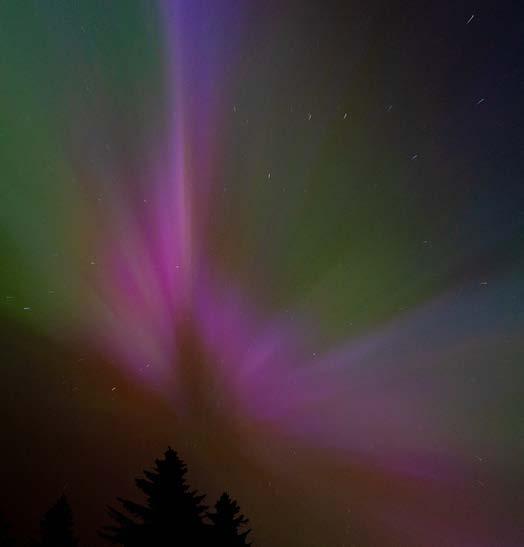
We were lucky enough to experience this fine showing of aurora borealis this spring, one of the benefits of the lack of light pollution over much of North Wales

